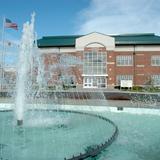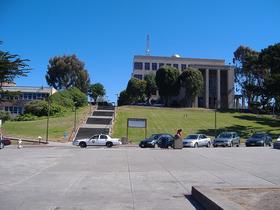- The mission of Moberly Area Community College is to foster excellence in learning. As a publicly supported institution of higher education, MACC will provide open admission to educational programs and services that are geographically and financially accessible throughout northeast Missouri.
School Highlights
Moberly Area Community College serves 6,539 students (39% of students are full-time).
The college's student-teacher ratio of 19:1 is higher than the state community college average of 16:1.
Minority enrollment is 22% of the student body (majority Black and Hispanic), which is less than the state average of 41%.
Quick Facts (2025-26)
- Enrollment: 6,539 students
- In-state tuition: $4,170
- Out-state tuition: $5,820
- Student-teacher ratio: 19:1
- Minority enrollment: 22%
- Source: Integrated Postsecondary Education Data System (IPEDS)
Top Rankings
Moberly Area Community College ranks among the top 20% of public schools in Missouri for:
Category
Attribute
Community Size
School Overview
The teacher population of 346 teachers has stayed relatively flat over five years.
Moberly Area Community College
(MO) Community College Avg.
Carnegie Classification
Associate's Colleges: High Transfer-High Nontraditional
Baccalaureate Colleges: Diverse Fields
Institution Level
At least 2 but less than 4 years
At least 2 but less than 4 years
Institution Control
Public
Public
Total Faculty
346 staff
139 staff
School Calendar
Student Body
The student population of Moberly Area Community College has grown by 34% over five years.
The student-teacher ratio of 19:1 has increased from 14:1 over five years.
The Moberly Area Community College diversity score of 0.38 is less than the state average of 0.61. The school's diversity has stayed relatively flat over five years.
Total Enrollment
6,539 students
2,125 students
Student-Teacher Ratio
19:1
16:1
# Full-Time Students
2,560 students
718 students
# Part-Time Students
3,979 students
1,407 students
# Enrollment Undergraduate
653 students
246 students
# Full-Time Undergraduate Students
2,560 students
834 students
# Full-Time Graduate Students
n/a
11 students
# Part-Time Undergraduate Students
3,979 students
684 students
# Part-Time Graduate Students
n/a
9 students
Total Dormitory Capacity
54 students
200 students
% American Indian/Alaskan
n/a
n/a
% Asian
2%
2%
% Hispanic
7%
6%
% Black
8%
10%
% White
78%
59%
% Hawaiian
n/a
1%
% Two or more races
3%
4%
% Non Resident races
n/a
1%
% Unknown races
2%
17%
Diversity Score
0.38
0.61
College Completion Rate (Students who graduate in less than 4 years)
39%
43%
College Completion Rate (Students who graduate in 4 years or more than 4 years)
n/a
62%
Average Graduate Earnings (10 Years)
$30,900
$30,900
Tuition and Acceptance Rate
The public in-state tuition of $4,170 is less than the state average of $4,393. The in-state tuition has declined by 24% over four years.
The public out-state tuition of $5,820 is less than the state average of $6,050. The out-state tuition has declined by 19% over four years.
In-State Tuition Fees
$4,170
$4,393
Out-State Tuition Fees
$5,820
$6,050
% Students Receiving Some Financial Aid
90%
91%
Median Debt for Graduates
$10,500
$10,500
Median Debt for Dropouts
$5,500
$5,500
Acceptance Rate
n/a
94%
Source: 2024 (or latest year available) Integrated Postsecondary Education Data System (IPEDS)
School Notes
- School Mascot: Greyhounds
- We are a strong and proud institution, founded in 1927, and thriving today as a college that truly cares about the students, faculty, and staff who together make this institution great. Our enrollment is approximately 4000 and we offer both day and evening classes, on-campus, off-campus, and dual credit in the area high schools; as well as a variety of support services--all designed to make the learning experience at MACC truly rewarding. Our emphasis is on low student-teacher ratios, individualized attention, and respect for the rich diversity of students we serve. As a progressive institution, we strive to provide the academic and technological services that our students need in order to be successful in the future. All two-year degree and one-year certificate programs are approved by the Missouri Coordinating Board for Higher Education. Specific programs within the College are approved by the Missouri Department of Elementary and Secondary Education (Division of Vocational and Adult Education), the Missouri State Board of Nursing, and the Missouri Department of Public Safety. MACC also offers courses and programs approved by the American Institute of Banking, the Missouri Department of Social Services and the American Management Association. Moberly Area Community College is accredited by The Higher Learning Commission of the North Central Association of Colleges and Schools.
- Sample of notable school alumni/alumnae:
- E.J. Smith - NJCAA Player-of-the-Year in 2005; over 1,086 points in his MACC career. -
- Dewella Holliday-Shuck - All-Time Leading Scorer at MACC with 1,408 points; named All-American and All-Region XVI Player. -
Frequently Asked Questions
How much does Moberly Area Community College cost?
Moberly Area Community College's tuition is approximately $4,170 for In-State students and $5,820 for Out-State students.
Who are famous alumni from Moberly Area Community College?
Moberly Area Community College famous alumni include: E.J. Smith - NJCAA Player-of-the-Year in 2005; over 1,086 points in his MACC career. and Dewella Holliday-Shuck - All-Time Leading Scorer at MACC with 1,408 points; named All-American and All-Region XVI Player..
What is Moberly Area Community College's ranking?
Moberly Area Community College ranks among the top 20% of community college in Missouri for: Largest student body.
Recent Articles

Community Colleges: A to Z – 2025 Guide
Explore the A–Z of community colleges in 2025: programs, affordability, pathways, and innovations for educators and parents.

Community College vs. Dual Enrollment 2025
Compare community college and dual enrollment in 2025. A parent’s guide to affordability, transfer credits, and student success pathways.

Will My Child’s Credits Transfer? Parent’s 2025 Guide
Learn how to ensure your child’s credits transfer in 2025. A parent’s guide to transfer policies, pitfalls, and planning for success.










